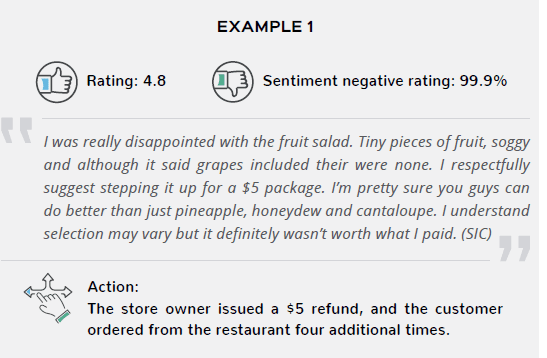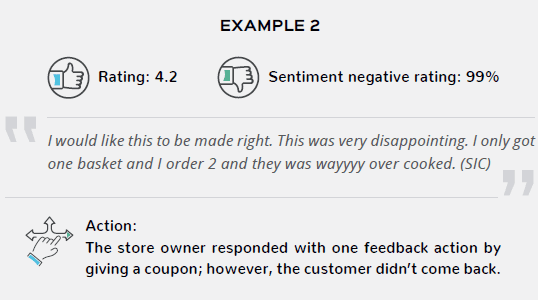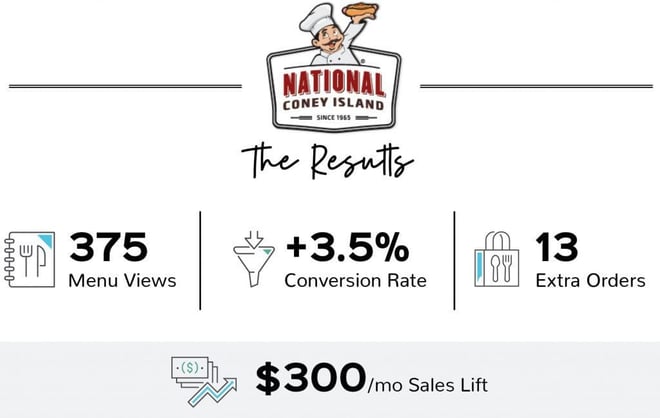6 min read
Driving More Revenue from Strategic Customer Data Analysis
Remaining competitive in the digital space means leveraging data to boost your business at every opportunity. You might be surprised to learn just...
Platform
What is Paytronix Guest Engagement Suite?
Combining online ordering, loyalty, omnichannel messaging, AI insights, and payments in one suite. Paytronix delivers relevant, personal experiences, at scale, that help improve your entire digital marketing funnel by creating amazing frictionless experiences.
A Complete Guest Engagement Suite
Online Ordering
Acquire new customers and capture valuable data with industry leading customization features.
Loyalty
Encourage more visits and higher spend with personalized promotions based on individual activity and preferences.
Catering
Grow your revenue, streamline operations, and expand your audience with a suite of catering tools.
CRM
Build great customer relationships with relevant personal omnichannel campaigns delivered at scale.
Artificial Intelligence
Leverage the most data from the most customer transactions to power 1:1 marketing campaigns and drive revenue.
Payments
Drive brand engagement by providing fast, frictionless guest payments.
Solutions
Paytronix Guest Engagement Solutions
We use data, customer experience expertise, and technology to solve everyday restaurant and convenience store challenges.
FlightPaths are structured Paytronix software onboarding journeys designed to simplify implementation and deliver maximum ROI.
Customer Success Plans (CSPs) are tiered service offerings designed to help you get the most from your Paytronix software, whether you prefer self-guided support or hands-on partnership.
Contactless Experiences
Accommodate your guests' changing preferences by providing safe, efficient service whether dining-in or taking out.
Customer Insights
Collect guest data and analyze behaviors to develop powerful targeted campaigns that produce amazing results.
Marketing Automation
Create and test campaigns across channels and segments to drive loyalty, incremental visits, and additional revenue.
Mobile Experiences
Provide convenient access to your brand, menus and loyalty program to drive retention with a branded or custom app.
Subscriptions
Create a frictionless, fun way to reward your most loyal customers for frequent visits and purchases while normalizing revenues.
Employee Dining
Attract and retain your employees with dollar value or percentage-based incentives and tiered benefits.
Order Experience Builder
Create powerful interactive, and appealing online menus that attract and acquire new customers simply and easily.
Loyalty Programs
High-impact customizable programs that increase spend, visit, and engagement with your brand.
Online Ordering
Maximize first-party digital sales with an exceptional guest experience.
Integrations
Launch your programs with more than 450 existing integrations.
Loyalty Programs
Deliver the same care you do in person with all your digital engagements.
Online Ordering
Drive more first-party orders and make it easy for your crew.
Loyalty Programs
Digital transformations start here - get to know your guests.
Online Ordering
Add a whole new sales channel to grow your business - digital ordering is in your future.
Integrations
We work with your environment - check it out
Tobacco Reporting
Comply with AGDC 2026 DTP Requirements
Company
We are here to help clients build their businesses by delivering amazing experiences for their guests.
Meet The Team
Our exceptional customer engagement innovations are delivered by a team of extraordinary people.
News/Press
A collection of press and media about our innovations, customers, and people.
Events
A schedule of upcoming tradeshows, conferences, and events that we will participate in.
Careers
Support
Paytronix Login
Order & Delivery Login
Resources
Paytronix Resources
Learn how to create great customer experiences with our free eBooks, webinars, articles, case studies, and customer interviews.
FlexPoint Service Catalog
Access FlexPoints are a cost-effective, flexible way to access our value-added services, to ensure you get greater impact from your Access software solution.
See Our Product In Action
E-Books
Learn more about topics important to the restaurant and c-store customer experience.
Reports
See how your brand stacks up against industry benchmarks, analysis, and research.
Blog
Catch up with our team of in-house experts for quick articles to help your business.
Case Studies
Learn how brands have used the Paytronix platform to increase revenue and engage with guests.
Unlock loyalty strategies that 3 out of 4 restaurants use to boost engagement by 40% without adding staff.
3 min read
Jul 05, 2022

As customers’ tastes lean increasingly digital, brands can take action now to capitalize on ease of use. That means not only making the ordering and reviewing process easier but enabling the process to intelligently adapt to the customer.
The solution: a smart order-and-delivery process, which can be facilitated through artificial intelligence (AI). Paytronix previously called this Artificial Intelligence to Individual Action, or AI to IASM.
Paytronix has integrated AI into all its products to make the customer experience easier and more intelligent. Using one of the largest datasets of consumer transactions in the industry, Paytronix has one of the strongest models with deeper insights that drive individual action through artificial intelligence, referred to as AI to IASM. You can set out to create great guest experiences and run new campaigns, confident that decision engines are using insights and making recommendations that have worked for years.
Paytronix has published The Order & Delivery Report 2022, which details this trend and the data surrounding it. This blog and the ones that follow will highlight findings from that report, as well as sheds new light on recently acquired data.
Sentiment Analysis
For instance, what if your technology could bring a more in-depth understanding to your reviews? Consider the role that sentiment plays. The rating an establishment receives and the words that accompany that rating may actually tell two different stories.
Paytronix data shows that 15% of orders with a rating of 4.5 or better actually have a negative sentiment and could benefit from action, while 3-star reviews most frequently contain negative sentiment.
Sentiment analysis, which can be accomplished using AI, is one tool that can help. Sentiment analysis enables the store manager to identify negative reviews that otherwise would have been missed and act quickly to recover the situation. This is important because sentiment scores are nearly as accurate a predictor of whether a patron will return as the ratings themselves. And as the below examples show, high ratings can hide poor customer experience.


Intelligent Menu Design
Another exciting implication of AI is the potential to influence customer ordering choices through smart menu design and recommendations.
Some establishments have long or complex menus, causing customers to gloss over some options or potential add-on items. Understanding where to place options on the menu and when to suggest an additional item can make a big difference in the order total.
Multivariant menu testing can determine how to help customers make sense of large menus in a way that’s beneficial for restaurants and c-stores. Working with Paytronix, National Coney Island — well-known for their large, detailed menu with plenty of options for everyone — utilized multivariant menu testing to determine if AI to IASM could reduce customer frictions with the menu.
The results were eye-opening, delivering an additional 3.5% conversion rate and $300 monthly sales lift per store.

Intelligent Menu Recommendations
Another example of helpful AI to IASM is intelligent recommendations. Recommendations are not a new feature: “Would you like fries with that?” has been a staple for a long time. But adding intelligent recommendations to digital orders provides customers a superior ordering experience while increasing revenue.
Uno Pizzeria & Grill is running a trial of intelligent recommendations, and early results have been encouraging. Uno reported that guests were twice as likely to accept the AI’s recommendations over ones manually programmed by staff. This produced a 1-3% lift on average checks from intelligent recommendation orders in comparison to no-recommendation orders, increasing Uno’s orders by between $100 and $150 per store per month.
Wrapping Up
There is no denying the ongoing challenge to the hospitality industry. In the wake of a global pandemic that brought the loss of over 6 million people worldwide and wreaked economic havoc, restaurants and c-stores are now wrestling with supply chain and labor disruptions amid a customer experience revolution. The world has not stopped changing, and, to succeed, the hospitality industry must embrace our new circumstances.
What is clear is that the customer experience of the future will be different than it was in 2019, before the pandemic. C-stores and restaurants will need to use technology to cater to guests wherever they are and give those guests the flexibility to receive their food through different channels. Payment must be effortless, with preferred selections front and center. And the experience of the future will enable guests to be heard when things don’t go right. AI can do all of this while removing frictions from the experience. Indeed, the future of guest experience is bright.

6 min read
Remaining competitive in the digital space means leveraging data to boost your business at every opportunity. You might be surprised to learn just...

4 min read
Although customer tastes are trending toward takeout, delivery customers remain a critical segment to embrace. That’s because one key learning from...
4 min read
The risk of poor reviews may cause some establishments to shy away from digital ordering. While this is a legitimate concern, there are proven...